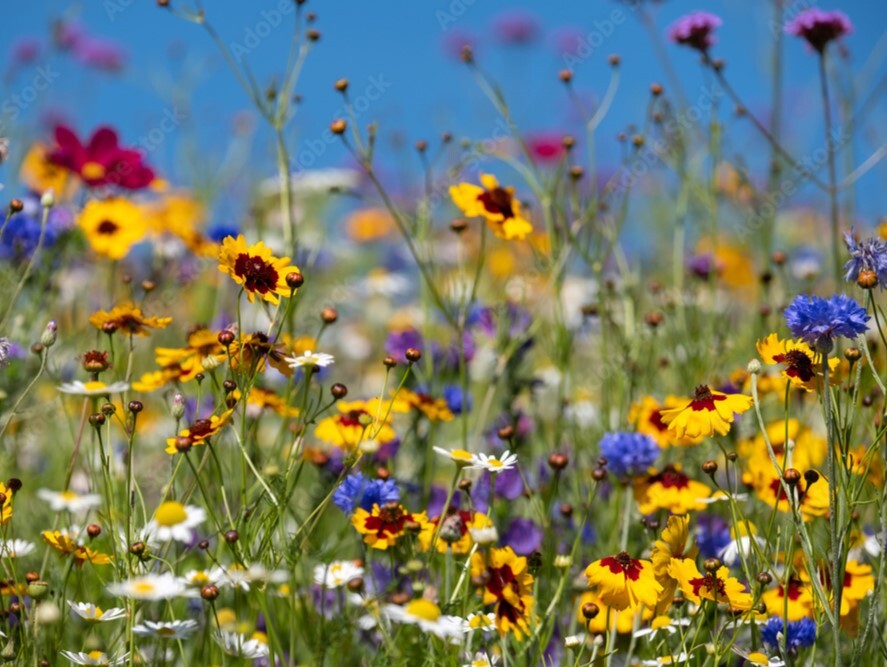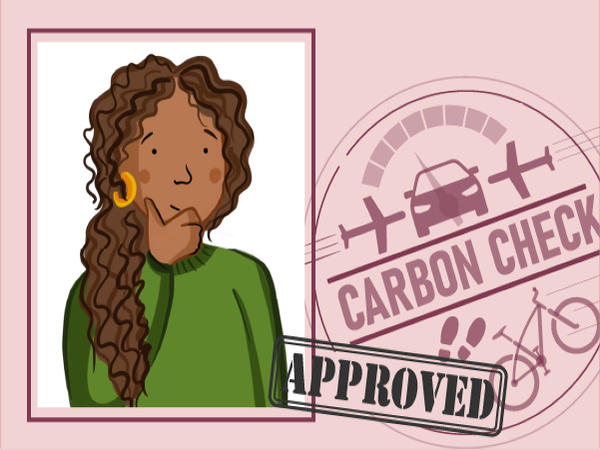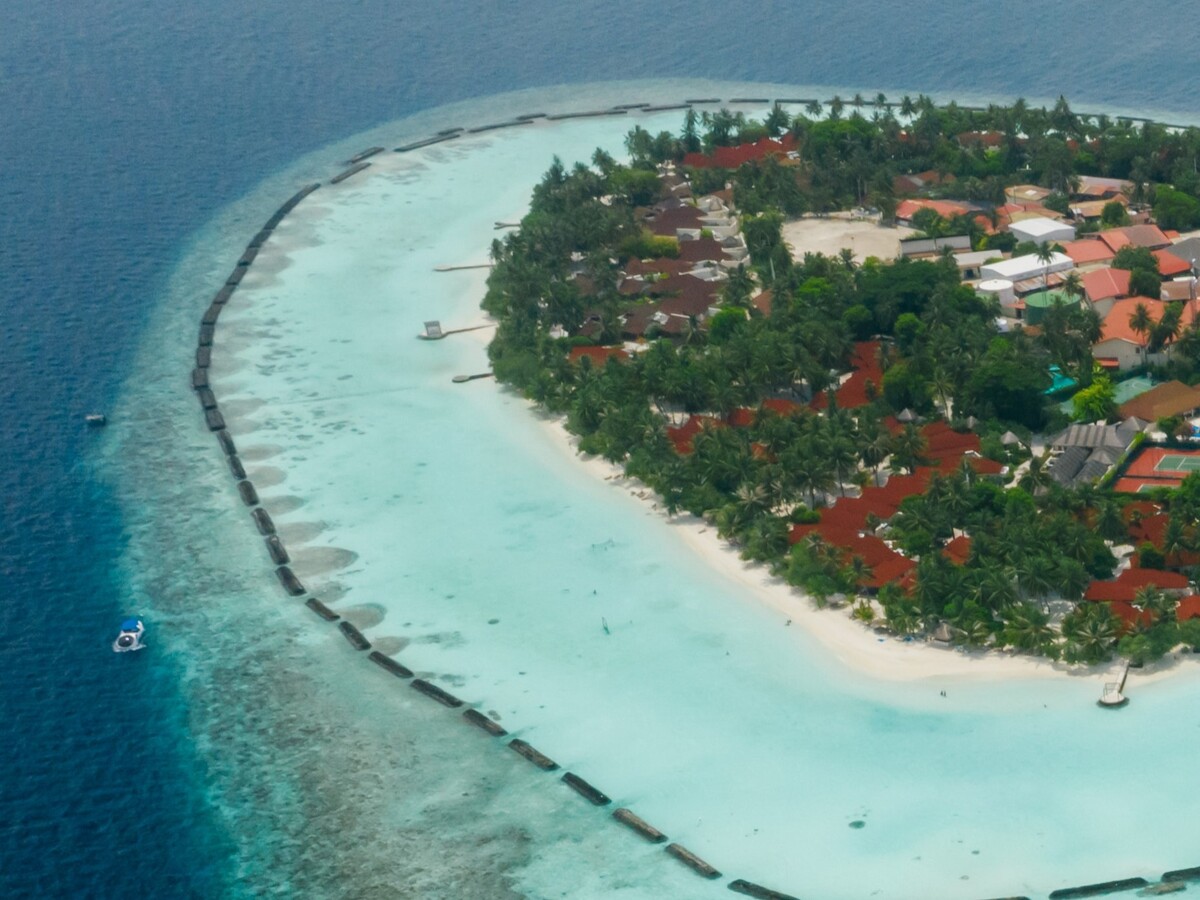You are viewing 1 of your 3 free articles for this month.
Restoring a thriving ecosystem in East Africa
Where East African governments are not leading the way, community groups and private organisations often fill the gaps, restoring ecosystems and creating income opportunities that rely on a healthy environment.

As is the case across the whole continent, East Africa suffers the worst effects of climate change, despite producing just a fraction of global greenhouse gas emissions. Droughts in particular cause widespread hardship and suffering across large parts of the region.
Civil wars and regional conflicts prevent progress in sustainable development, though some countries have managed to achieve relatively long-term stability after periods of upheaval or unrest.
Extreme droughts
Perhaps the most pressing issue facing East Africa are droughts. The region is no stranger to tough climate conditions that affect food and water supplies. Scientists at the Famine Early Warning Systems Network consider climate change to be one of the reasons that recent droughts in Kenya, Ethiopia and Somalia have been so extreme and more frequent. In 2022, the UN estimates 13 million people in the region faced severe hunger due to ruined crops, livestock deaths and water shortages.
Climate modellers can now predict these events and scientists, such as Chris Funk, director of the Climate Hazards Centre at the University of California, have called for early warning systems to prepare for serious droughts before they ultimately lead to starvation and suffering.
So far, 500,980 mangroves have been planted and the aim is to plant 14 million in total
Proposed mitigation projects include providing schools with drinking water supplies and offering treatment campaigns as well as extra feed for livestock. In Kenya, groups including the Kenyan Meteorological Department and PlantVillage have started working together to deliver rainfall forecasts and drought warnings to thousands of farmers via SMS and TV broadcasts.
Desertification and regreening
Around 80% of Kenya’s land and 70% of Ethiopia’s is prone to desertification, which results in the ruin of fertile earth. It is caused by a number of factors, including deforestation, wind erosion, overgrazing and droughts.
Reforestation has often been seen as a way to combat desertification – for example, the Great Green Wall project initially aimed to plant a ‘wall’ of trees across the Sahel, including Ethiopia, Eritrea and Djibouti. But this was later replaced by a more multi-faceted approach in the region, including indigenous land use techniques, after several experts suggested that only planting trees was too simplistic and not evidence-based.
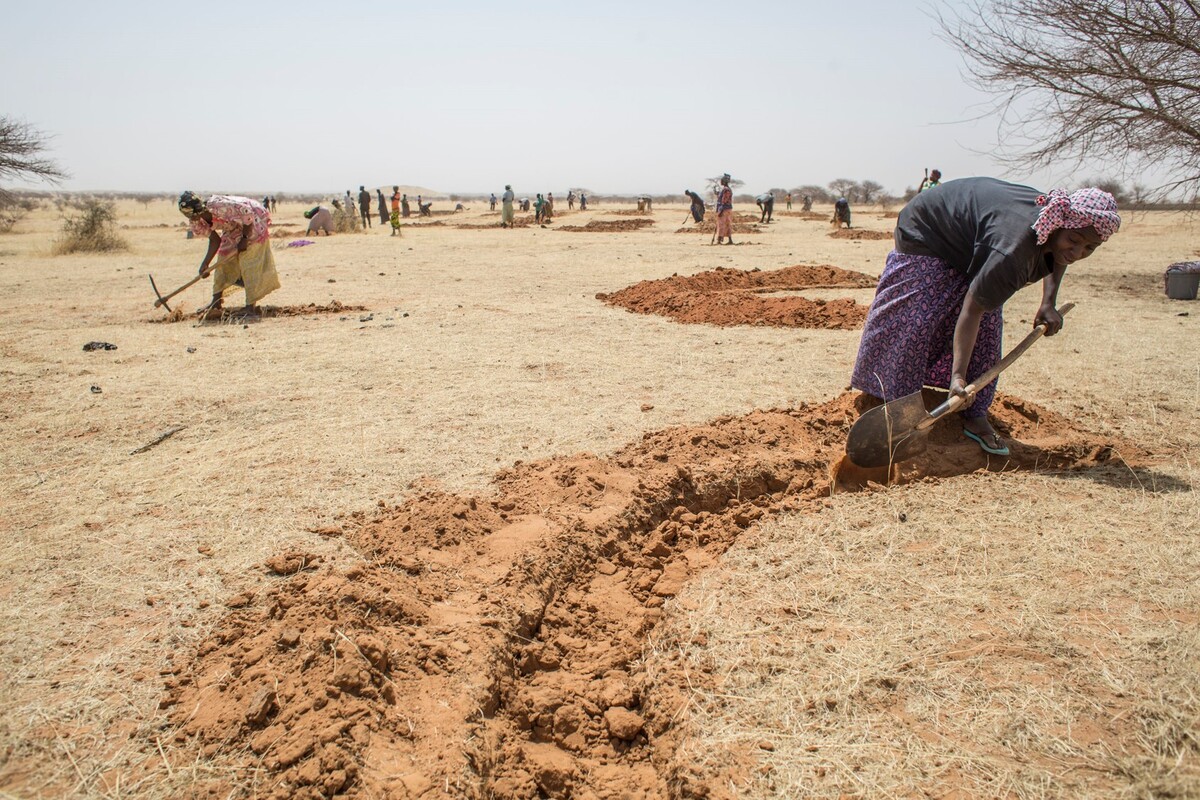
Action Against Desertification, a partner of the Great Green Wall project, has helped restore 3,251 hectares of Ethiopian land through natural regeneration, planting native trees and conserving water. It has also trained 900 households in how to regreen the land and make money from trees without cutting them down, such as selling honey (bees needing healthy trees and plants), fruits and gum Arabic.
Biodiversity loss
East Africa has areas of great biodiversity that are crucial to protect, for the health of the planet and to support economies – for example, through wildlife tourism.
Threats to biodiversity include deforestation, wildlife poaching and developments such as roads cutting through wildlife corridors.
Many areas of biodiversity importance are outside protected areas. For example, an estimated 10% remains of the coastal forests of southern Somalia, Kenya, Tanzania and Mozambique – home to species found nowhere else in the world – and just 17% of that is in protected areas.
Strengthening existing protected areas is generally more practical than creating new ones, but governments often lack the resources or the will to invest in biodiversity protection.
In some cases, public-private partnerships have been successful. African Parks is a South Africa-based non-profit that forms agreements with governments to manage their national parks. In places such as Rwanda’s Akagera National Park, wildlife and wetlands have been impressively restored, with new luxury lodges boosting the country’s eco-tourism industry (Rwanda’s total tourism revenue in 2019 was $498m (£397m); more than 80% of their tourism is nature-based).
But African Parks has also been accused of having a militaristic, colonial style of conservation and a poor record of working with communities – issues that have led to them pulling out of places such as Omo National Park in Ethiopia.
Biodiversity protection will always be more sustainable when it is managed by local communities – such as the Kenyan community-based Brain Youth Group, founded in 2011. Its mangrove forests had shrunk from 1,641 to 215 hectares due to pollution, urbanisation and deforestation.
So far, 500,980 mangroves have been planted and the aim is to plant 14,260,000, creating income opportunities that require healthy mangrove ecosystems, such as fishing and honey farming.
Water and air quality
Plastics, agricultural chemicals and human sewage are some causes of pollution in East African waters.
Lake Victoria – which is bordered by Kenya, Tanzania and Uganda – is the world’s second largest freshwater lake. It is heavily polluted by plastics, chemical fertilisers and untreated sewage.
Due to the size of the lake and its span across three countries, addressing the causes of pollution is not an easy task. But spreading awareness is a good first step. The Flipflopi is a dhow boat made of recycled plastic (including 30,000 flip flops).
In 2021, it sailed around the lake, calling in at communities where the crew spoke about plastic pollution and how it impacts the lake, fish stocks and human health.
Air pollution is a major problem in East African cities such as Nairobi, Addis Ababa and Kampala. Air quality has declined due to an increase in traffic, industry and urban growth. Scientific studies have shown poorer neighbourhoods – often close to factories and dumpsites – are worst affected.
Kenya’s environmental agency set air quality regulations in 2014, but due to lack of monitoring data, this has not been enforced. In these expanding cities, a focus on building good public transport infrastructure would help reduce vehicles on the road. It would also allow cities to ban old cars that produce black carbon, while allowing drivers an alternative means of transport.
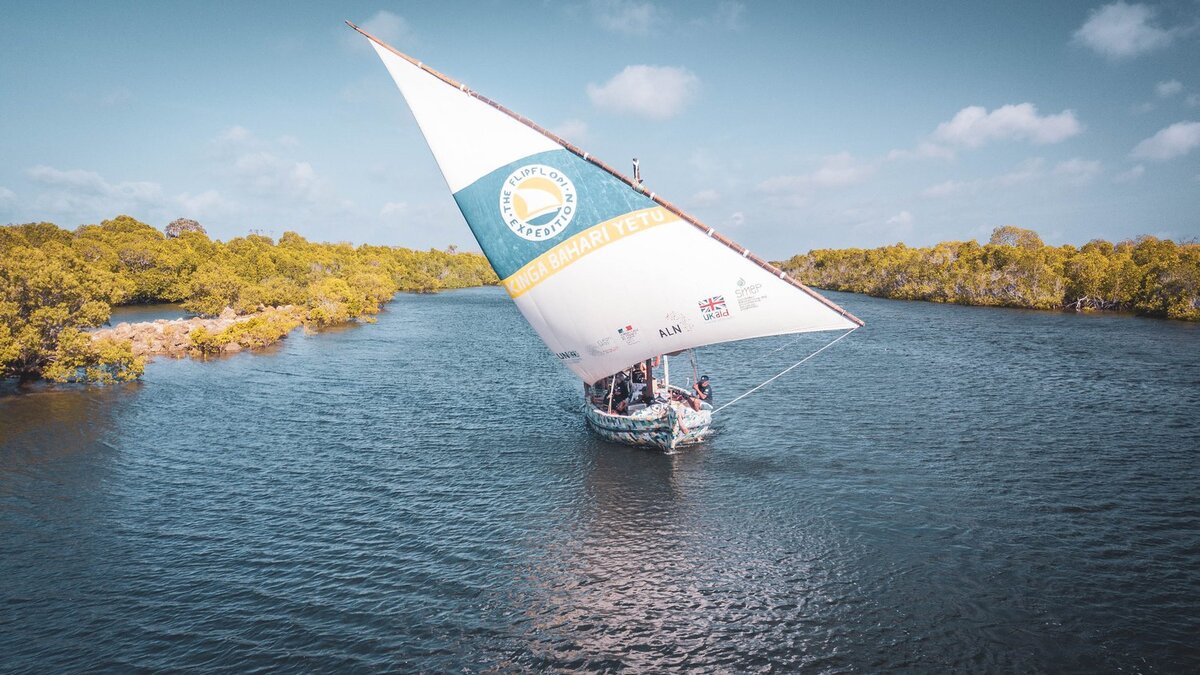
Waste management problems
Waste management is a major problem across Southern Africa, with most collected rubbish heading for landfill sites and too little of it recycled. In Mozambique, around 98-99% of collected waste is dropped at uncontrolled dumpsites, leading to emissions of 1.5 million tonnes of carbon dioxide equivalent each year. Scientists have also demonstrated how open-air waste burning leads to greenhouse gas emissions and impacts public health.
Many countries, such as South Africa and Mozambique, have struggled to keep up with their growing populations, with poorer areas afforded the least development attention. Underserved areas often lack access to kerbside collection, waste services and recycling facilities, so refuse gets dumped around communities and in waterways.
Throughout the region, recycling is often run through the informal sector – unpaid waste pickers sort through rubbish and sell what they can to recycling plants. In South Africa, there is no nationwide recycling programme, so waste is not usually divided at home.
It is estimated that waste pickers save municipalities up to R749m (£38m) in landfill space at no cost. Experts have called for informal industry waste pickers to be included in future waste management strategies, whilst improving their conditions and providing payment for their services.
Many Southern African countries have policies to reduce plastic waste. Namibia taxes the use of single-use plastic bags, while Malawi banned thin plastics in 2019.
On a larger scale, ambitious co-financed operations work to overhaul entire waste management systems. By eventually creating a circular economy in Mozambique, the NAMA Support Project aims to reduce emissions by 500,000 tonnes of carbon dioxide equivalent in 2024, and 2.8 million tonnes by the end of 2030.
Land degradation and biodiversity
Many people in Southern Africa depend on rural land for agriculture and wildlife tourism. But factors including erosion, deforestation and poor farming methods have degraded environments across the whole region.
Restoring land isn’t a quick fix and there isn’t a silver-bullet solution. Instead, each piece of land must be considered in its own right, bearing in mind the needs and rights of communities and the environment.
In countries such as South Africa, land use issues are intertwined with those of historic injustices and the redistribution of land taken during periods of colonialism and apartheid.
Simply removing agricultural practices to let the land recover may impact food security, another matter of concern in Southern Africa. A focus on regenerative agriculture is likely to be more sustainable in viable farming areas.
Support by donating
|
One regional success story is that of Gorongosa National Park in Mozambique, which formed a frontline of the civil war from 1977 to 1992. Projects to restore the war-torn park and uplift the surrounding communities began in the mid-1990s.
Today, wildlife populations have recovered, with some species reintroduced. Sustainable farming projects (coffee, honey and cashew) have been established around the park borders. And it’s hoped new safari properties opening in 2022 will boost eco-tourism.
Conflict and development
Amongst the deadliest examples of conflict in East Africa are the ongoing civil wars in Somalia and Ethiopia. Wars and conflicts can make it impossible to supply aid to areas suffering from droughts and hunger. Any gains made by conservation and sustainability efforts are often lost, and it is typically very difficult to maintain projects.
Deforestation and poaching may increase, as people become desperate, using all available resources to survive. Stability of the region is essential before most Sustainable Development Goals can be effectively tackled.
Check it out
Learn more about the issues
- Famine Early Warning Systems Network report on food aid
- Great Green Wall - an African-led project to restore 8000km of degraded land. Professional organisations can get involved
- Action Against Deforestation is an example of work in Ethiopia
- Protecting Lake Victoria – The World Bank Water Blog
Activate employees
Find out how OckiPro membership engages employees to deliver sustainability impact.
Get Involved
There are many ways to get involved with Ocki and its community. To find out more, click the button below
